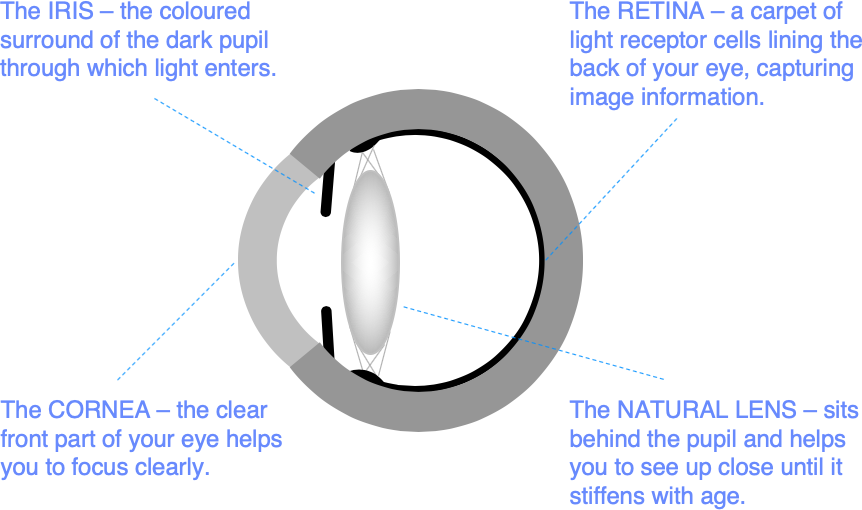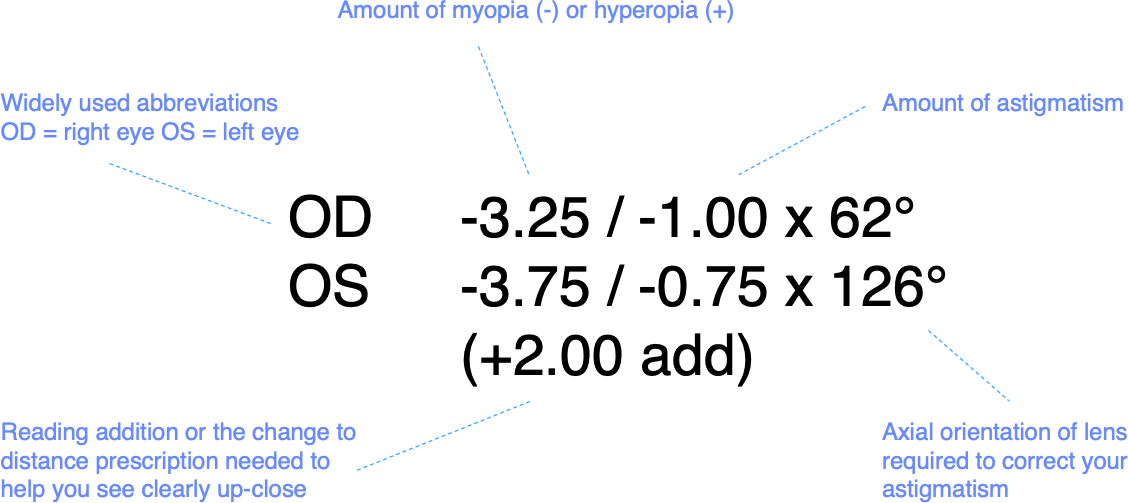You are here:
- Your Eyes / Understanding your spectacle prescription
Understanding your spectacle prescription
We see by forming an image on the retina - a carpet of light sensitive cells, each acting like a pixel on a computer screen, that lines the inside of the back of your eye. Images are focused on the retina by your cornea (the clear part of the front of the eye) and your natural lens (suspended within the eye just behind the pupil). About half the UK population (50%) requires spectacles or contact lenses to focus a clear image of a distant object on the retina. You need good distance vision in order to drive, recognise faces, see the television and for most outdoor activities.

Spectacles and contact lenses either add or subtract focusing power to help form a clear image on the retina where the natural focusing power of your eye is incorrect. Problems with natural focusing power are called refractive errors. Refractive errors are measured in units of lens power ("dioptres" or D) and represented for each eye in your spectacle or contact lens prescription by a number prefixed by a sign (e.g. +1.00D or –12.50D). The sign indicates whether the spectacle correction required is for long (+) or short (-) sight.
Short sight (myopia) and long sight (hypermetropia) are often accompanied by an element of uneven focusing power (astigmatism). Imagine that the cornea or natural lens is more rugby ball shaped than football shaped. The extent of the difference in focusing power between the smallest and largest radius of curvature for this uneven (toric) shape would be the amount of astigmatism.
Astigmatism is represented in your spectacle prescription by a second number and an angle (e.g. –4.00D at 80°) indicating the focusing power and orientation of the lens required to correct the astigmatic component of your refractive error.
The younger eye is able to increase focusing power, or accommodate, to see near objects clearly. This flexibility of focus is provided by flexibility in the shape of the natural lens. As we get older, the natural lens becomes less flexible (presbyopia), and the ability to see up-close diminishes. This is why normally sighted people need reading glasses from their mid-40s on. The final component of your spectacle prescription describes the reading addition, or the difference between your prescriptions for distance and reading glasses. Typically, this varies from a +1.00D “add” in your mid-40s to a maximum level of +3.00D by your late-50s.
Sample prescription

Appointments and Enquiries
If you wish to arrange a preliminary consultation to find out more about your best options for vision correction surgery, please telephone Angelique Thomas on 020 7566 2156 or 07484 081815 (or from outside the UK +44 20 7566 2156 or +44 7484 081815) or email moorfields.ballan@nhs.net
